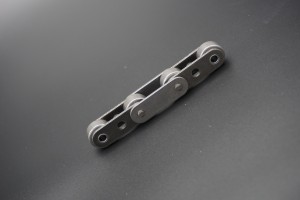Roller chains are fundamental components in a variety of applications including motorcycles, conveyor systems, bicycles and industrial machinery. Understanding the process of measuring roller chains is critical to ensuring their longevity and peak performance. In this blog post, we’ll dive into the intricacies of roller chain measurement, discussing its importance, techniques, and tips for maintaining these critical mechanical links.
Why is it important to measure roller chains?
Measuring roller chains is critical to identifying potential problems such as elongation and wear. Over time, roller chains suffer from wear and tear from constant use, high temperatures and exposure to external elements. By accurately measuring your chain, you can determine how much it is elongating and determine if it needs to be lubricated, tensioned, repaired or replaced. Proper roller chain measurements help prevent unexpected failures, ensure smooth operation, improve efficiency and extend the overall life of the chain.
Techniques for Measuring Roller Chains:
1. Measure pitch:
Pitch is the distance between adjacent roller pins. To measure the pitch of a roller chain, select a specific number of links, usually 24 or 10 inches. Measure the distance between the center of the first pin and the center of the last pin to get the thread pitch measurement. Compare this measurement to the chain’s original pitch specification from the manufacturer. Deviations from the original pitch measurement may indicate chain elongation due to wear.
2. Check the elongation:
Elongation is a common problem with roller chains, usually caused by wear and insufficient lubrication. To determine the level of elongation, use a roller chain gauge or calipers to measure the distance from the first roller pin to the last roller pin within a specific pitch. If the measured distance exceeds the manufacturer’s recommendation, the chain has stretched beyond acceptable limits and needs to be replaced.
3. Assess wear:
Wear is another important factor to consider when measuring roller chains. It is critical to inspect the chain links, pins and sprockets for signs of wear such as long holes, pitting, corrosion or excessive noise during operation. Regular maintenance and lubrication will help reduce wear and extend the life of your chain.
Tips for maintaining roller chains:
1. Proper Lubrication: Regularly lubricate roller chains with a suitable lubricant to minimize wear, reduce friction, and prevent premature elongation. Follow the manufacturer’s recommendations for lubrication times and use a high-quality lubricant appropriate for the specific application.
2. Tension adjustment: Regularly check and adjust the chain tension to prevent excessive slack or excessive tension. Improper tension will result in accelerated wear, reduced efficiency and increased noise.
3. Preventive Maintenance: Implement a preventive maintenance program that includes regular inspections, cleaning, and lubrication. This helps detect and correct problems before they cause significant damage, reducing costly repairs and downtime.
Measuring roller chains is an important aspect of roller chain maintenance to ensure optimum performance, service life and reliability. By employing the above techniques and implementing a robust maintenance program, you can identify chain elongation, detect wear, and take the necessary actions to keep your roller chain in good working order. Remember, proper measurements and timely maintenance can help you avoid unexpected breakdowns and help improve the overall efficiency of your machine.
Post time: Jul-21-2023

